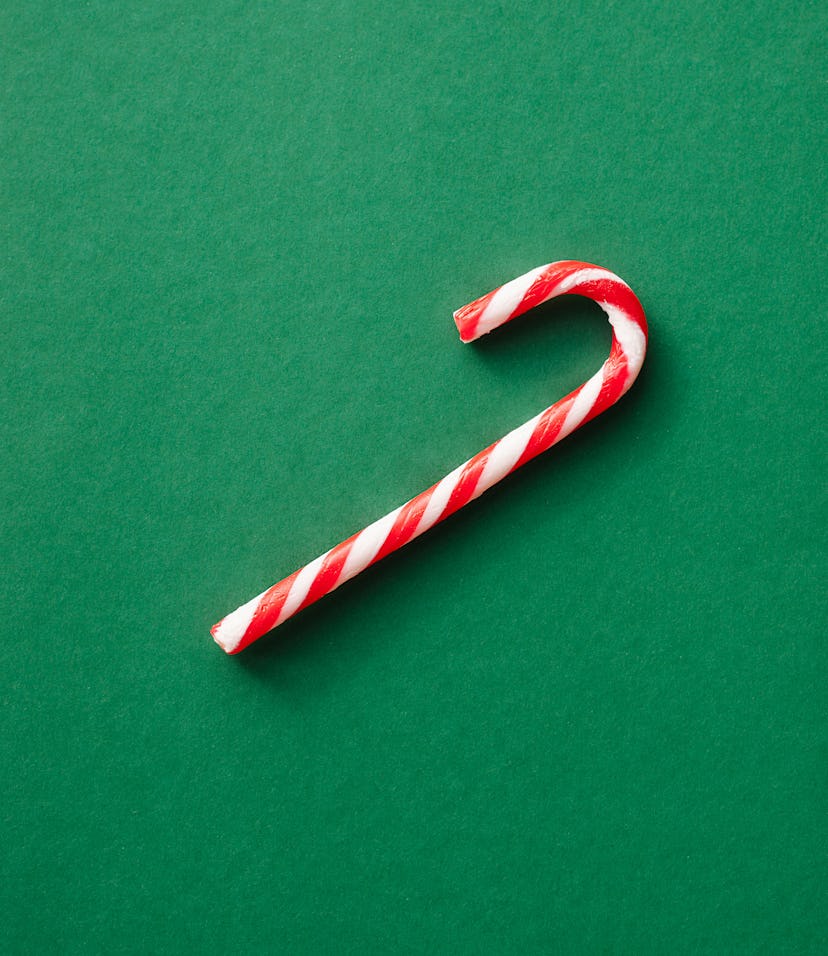Safety First

Can Babies & Toddlers Have Candy Canes?
Save ‘em for the big kids.
A big part of what makes Christmas so magical is the food. Chances are your family has special holiday traditions around baking cookies, stringing popcorn garlands, or building elaborate gingerbread houses. And of course you want to share seasonal treats with your little ones. So, can toddlers have candy canes? Can you offer your baby a taste of this classic confection this year? Experts caution parents to keep candy canes out of reach of young kids, and to find some softer, safer stocking stuffers until a few more years have passed.
Can babies eat candy canes?
Short answer: no, babies should not be eating candy canes. The American Academy of Pediatrics (AAP) says hard or sticky candies are a choking hazard to children 4 years old and younger, and experts agree.
“We try to minimize babies having anything that they can choke on easily, like a hard candy, and a candy cane definitely fits in the category of a hard candy. So I would say definitely [they’re] a no-no for a baby,” says Dr. Danielle Grant, M.D., pediatrician at Texas Children’s Pediatrics. If you want your baby to hold a candy cane for a photo op, Grant says that’s OK, as long as you’re nearby to grab it before your baby can stick it in their mouth.
Even if you’re holding the candy cane and just offering your baby a quick lick, Grant says that’s “still a no. It’s sticky and probably if they bite into it, if they have teeth, then the risk of getting a piece of that hard candy would, I think, outweigh the benefits.”
Can babies have peppermint?
Candy canes contain peppermint oil, which comes up a lot in conversations about whether its safe to use essential oils on babies. You should never apply to peppermint oil to a child’s face because it can cause spasms that impair breathing, according to Mount Sinai’s guide to using peppermint. Peppermint applied on children younger than 30 months of age can also increase a baby’s risk for seizures, says the Johns Hopkins website.
So, it seems like the safest amount of peppermint candy a baby can eat is zero. But if they’ve sampled a candy cane already, don’t panic. “Peppermint in candy is typically diluted enough to not cause any side effects from the peppermint itself, so the more important issue here would be safety from choking hazards,” says Rainie Robinson, a registered dietitian at Children’s of Alabama.
Can toddlers have candy canes?
Candy canes are still a choking risk for toddlers age 4 and younger, according to the AAP, Grant, and Robinson. “We follow the AAP recommendation that due to choking hazards, hard candy should not be introduced until 5 years of age,” Robinson says. “Remember that even though toddlers have some teeth, they are still learning to chew and grind food appropriately.”
Candy canes are both hard and sticky, Grant points out, which means the pieces and shards that break off if your toddler bites down on the candy cane present an even bigger choking hazard.
“Also, toddlers like to run when they’re eating. So if you’re running with a long, hard, sharp object, especially if it’s in their mouth, the risk of getting an injury in the mouth can be quite high,” Grant says.
Once your little one turns 5, you can offer them a candy cane, but you’ll want to supervise. Just make it crystal clear that there are rules and consequences for running amok with something in their mouth, Grant recommends. Steer clear of the assorted nuts this year, too.
Experts:
Dr. Danielle Grant, M.D., FAAP, pediatrician at Texas Children’s Pediatrics
Rainie Robinson, a registered dietitian at Children’s of Alabama
This article was originally published on